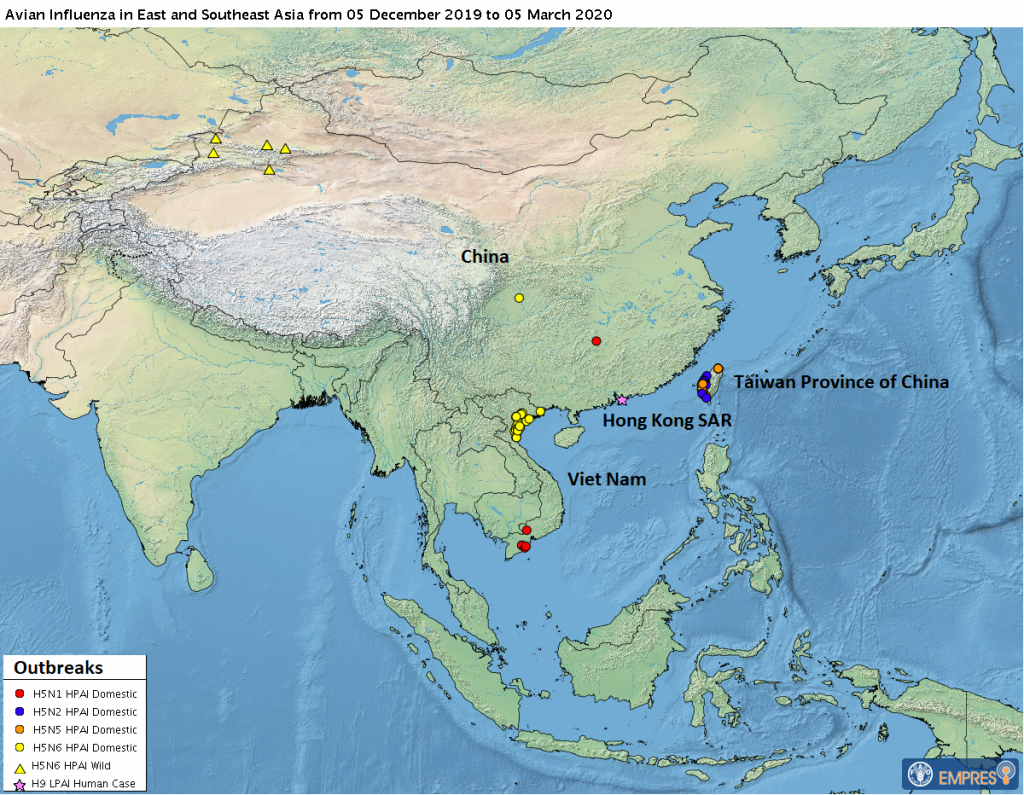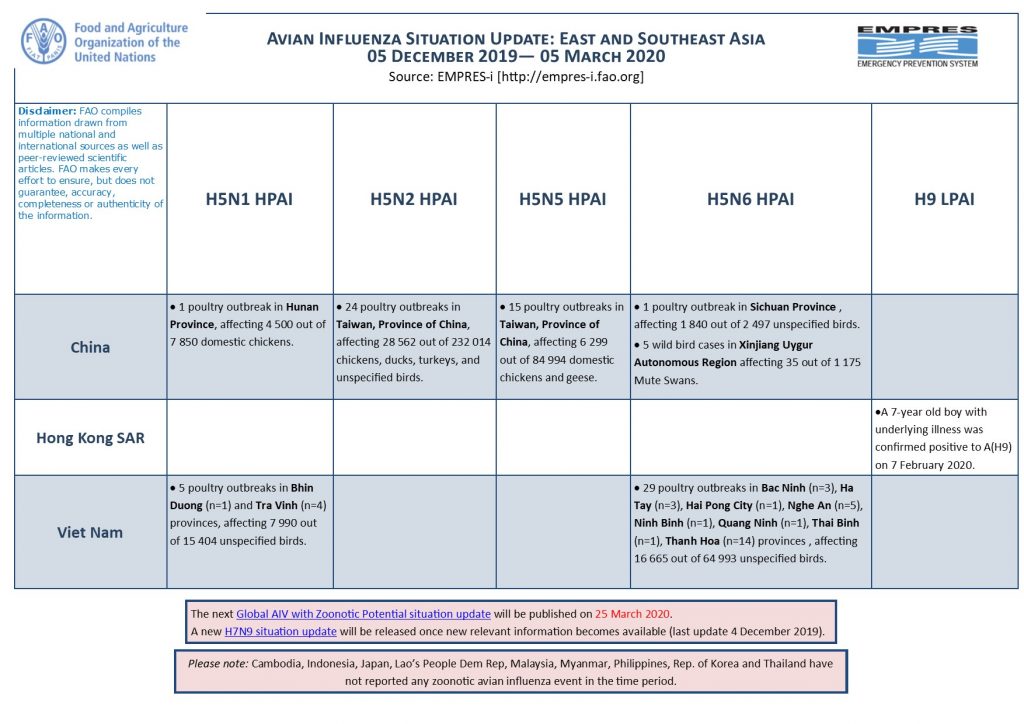FAO/EMPRES-AH is constantly monitoring the avian influenza situation worldwide and compiles information from multiple national and international sources as well as peer-reviewed scientific articles. Close collaboration with country and regional offices, the implementation of avian influenza field surveillance projects, and networks of expertise like OIE/FAO’s OFFLU (www.offlu.net) provide access to timely information on outbreaks, surveillance findings, and genetic similarities of circulating viruses or their virological features. This information is stored in the EMPRES Global Animal Disease Information System (EMPRES-i), a database that can be accessed online at http://empres-i.fao.org/eipws3g[1].
During the period 5 December 2019 to 5 March 2020, five different avian influenza virus subtypes have been reported in East and South-East Asia, four of them highly pathogenic in poultry (H5N1, H5N2, H5N5 and H5N6 HPAI) and one low pathogenic in poultry (H9 LPAI). In China, one outbreak of H5N1 HPAI was confirmed in chickens in Hunan Province. The last report of H5N1 HPAI had been recorded on 31 March 2019. In addition, H5N6 HPAI caused one poultry outbreak in Sichuan Province, China and five wild bird cases (Mute swans) in Xinjiang Uygur Autonomous Region, near the border with the Republic of Kazakhstan. Viet Nam reported five H5N1 HPAI outbreaks and 29 H5N6 HPAI outbreaks affecting domestic birds of unspecified species. In Taiwan, Province of China, 24 outbreaks in poultry were confirmed to be caused by H5N2 HPAI affecting a range of domestic bird species including chickens, ducks, turkeys and other unspecified bird species. H5N5 HPAI caused 15 additional outbreaks in domestic chickens and geese in Taiwan, Province of China. This H5N5 HPAI virus is phylogenetically close to viruses circulating in Europe in 2016-2017.
Hong Kong Special Administrative Region reported one human A(H9) case in a 7-year old boy with underlying illness.
Highly pathogenic H5N1, H5N2, H5N5 and H5N6 viruses have demonstrated the ability to spread via migratory water birds.
We consider avian influenza activity to be highest in the period from December to March, thus reports of outbreaks in poultry or detections in wild birds and humans are expected to decrease over the coming months in the region.
[1] To view this page ensure that Adobe Flash Player version 10.0.0 or greater is installed.







